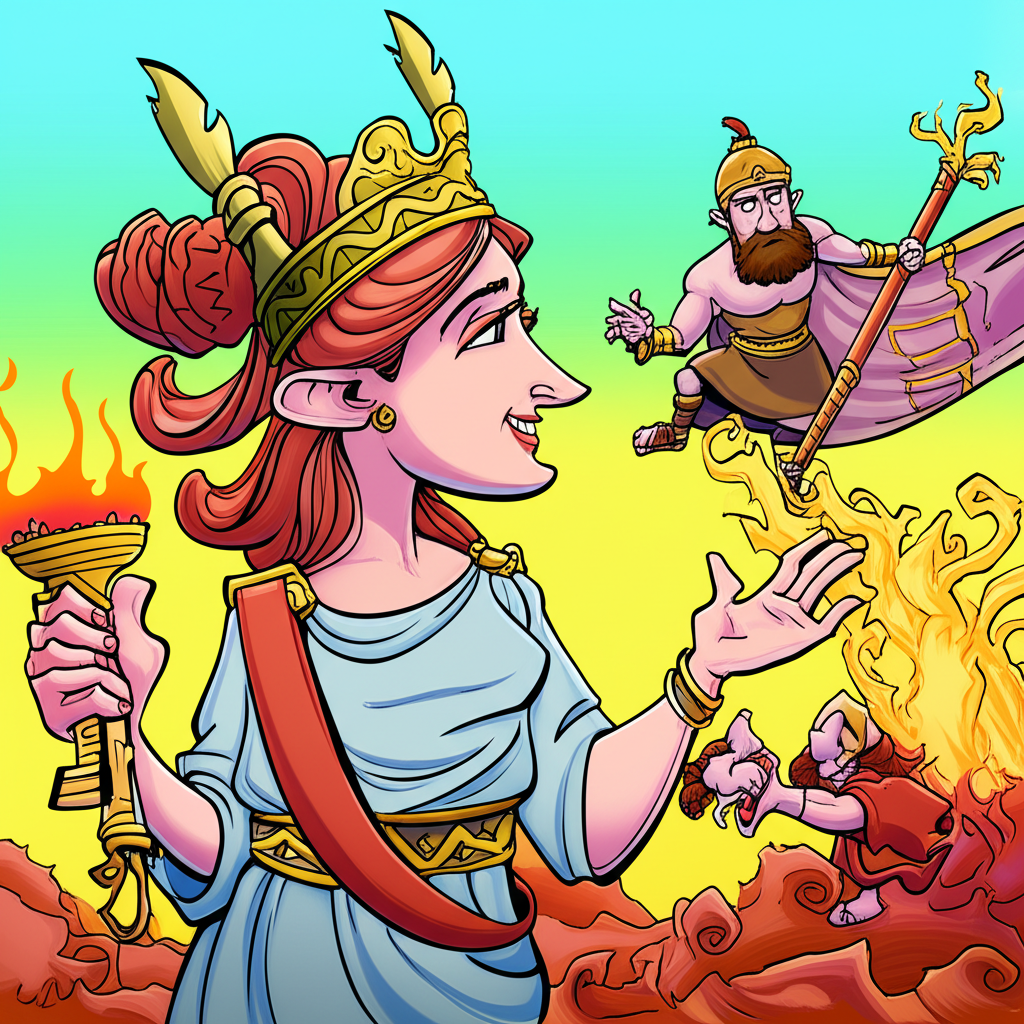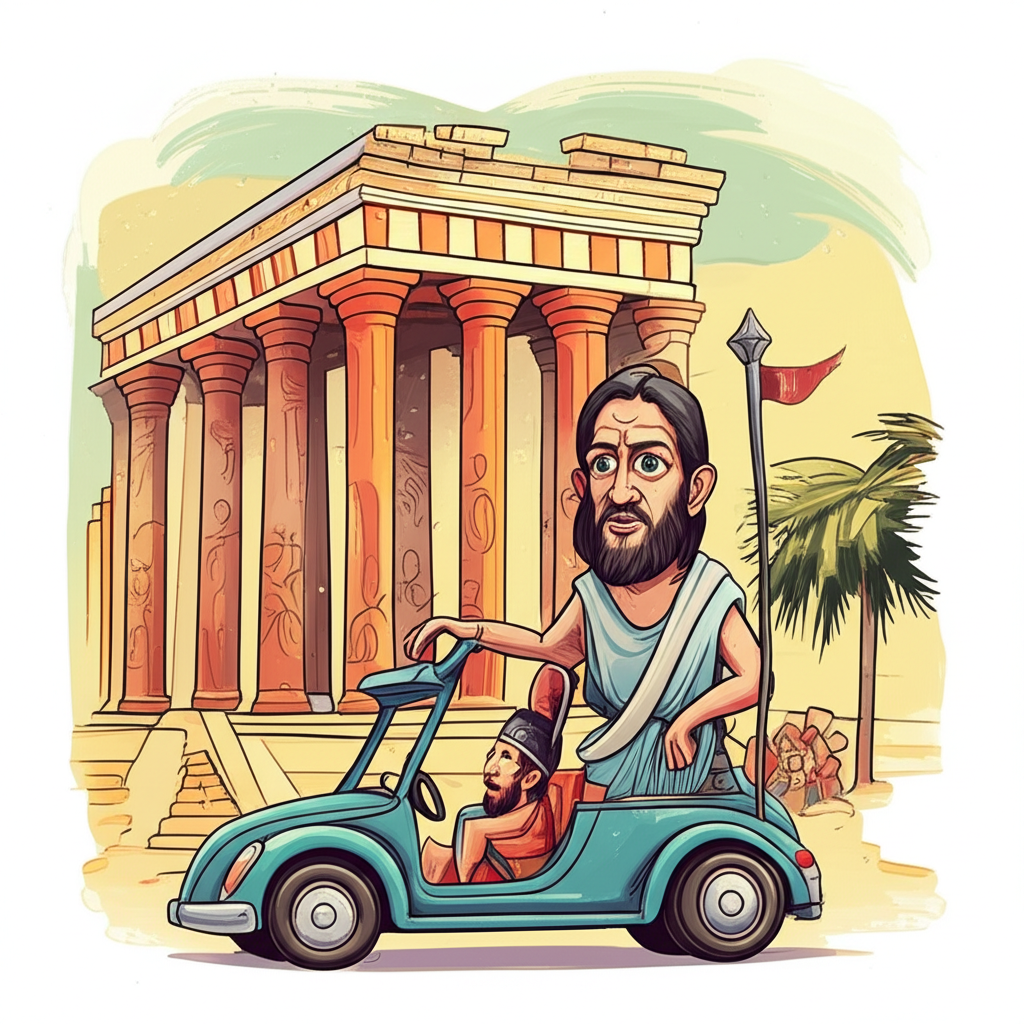
Hestia and the Trial of Labors of Heracles: A Mythological Narrative
1. Introduction
Within the rich tapestry of ancient Greek mythology, stories of gods, goddesses, and heroes abound, serving as windows into the worldview of a bygone era. This particular narrative delves into a unique interpretation of the renowned "Labors of Heracles," viewed through the subtle, yet profound, influence of Hestia, the often-overlooked goddess of the hearth. Originating from the vibrant oral traditions and written works of ancient Greece, this is a traditional story crafted by the vivid imaginations of people who lived thousands of years ago, reflecting their understanding of the world, morality, and the human condition.
2. Origins and Cultural Background
The myths surrounding figures like Hestia and Heracles emerged from the heart of ancient Greece, flourishing across its city-states from the Bronze Age through the Classical period. This was a society deeply intertwined with its natural environment, where the sun, sea, mountains, and forests were seen as imbued with divine presence. For the ancient Greeks, myths were more than mere tales; they were explanations for natural phenomena, moral lessons, chronicles of ancestral heroes, and justifications for social customs. Their world was governed by a pantheon of powerful, often capricious, gods and goddesses who resided on Mount Olympus, intervening in human affairs and shaping destinies. Humans navigated a complex existence, striving for kleos (glory) and arete (excellence), often grappling with fate (moira) and the consequences of their actions, both mortal and divine. The hearth, Hestia’s domain, was the literal and symbolic center of every home and community, representing warmth, stability, and the sacred bond of family.
3. Character Descriptions
In this narrative, two distinct figures stand at its core, embodying contrasting forces:
-
Hestia: The eldest of the Olympian siblings, Hestia is often depicted as the most gentle, serene, and unassuming of the gods. She is the goddess of the hearth, home, domesticity, family, and the sacred fire that burned in the center of every household and city Prytaneion (public hearth). Unlike her more boisterous siblings, Hestia rarely left Olympus or interfered in divine squabbles, preferring to tend to her sacred flame. Symbolically, she represented stability, inner peace, foundational order, and the quiet, enduring warmth that binds communities. She was the anchor, the steady flame amidst chaos, embodying the sanctity of home and the virtues of simplicity and contentment.
-
Heracles (or Hercules in Roman mythology): The demigod son of Zeus and the mortal Alcmene, Heracles was renowned for his extraordinary strength, courage, and adventurous spirit. Yet, his life was also marked by tragedy and immense suffering, largely due to the relentless persecution of Hera. Driven by a fit of madness, induced by Hera, Heracles committed a terrible act, slaying his own wife and children. As penance, he was condemned to serve King Eurystheus and perform twelve seemingly impossible "Labors." Symbolically, Heracles represented raw power, endurance, the struggle against overwhelming odds, and the arduous path to redemption. He was the embodiment of human potential and tragic flaws, constantly battling external monsters and internal demons.
4. Main Story / Narrative Retelling
The tragic madness that led Heracles to slay his family cast a long, dark shadow over his life. To atone for his grievous sin, the Oracle of Delphi commanded him to serve King Eurystheus for twelve years, undertaking a series of daunting tasks that would become known as his Twelve Labors. These labors were initially tests of brute strength and martial prowess, designed to be impossible.
As Heracles embarked on his arduous journey, slaying the Nemean Lion and confronting the multi-headed Lernaean Hydra, his immense power was evident. Yet, his early victories, though necessary, often involved significant destruction. From her eternal seat by the sacred hearth on Mount Olympus, Hestia observed. She, who embodied the quiet sanctity of home and the warmth of community, felt a tremor of imbalance in the world. The hero’s rage and the sheer force of his penance, while understandable, threatened to extinguish the very peace he was, in a way, meant to restore.
Hestia, true to her nature, would not directly intervene with a thunderbolt or a divine weapon. Her influence was far more subtle, a quiet whisper in the fabric of existence. She understood that Heracles’ true trial was not merely the slaying of beasts, but the purification of his spirit, the tempering of his immense power with wisdom and purpose beyond mere destruction.
After his early, destructive labors, Heracles often found himself restless, haunted by the specter of his past and the raw violence of his present. It was during these moments of deep contemplation, often by a flickering fire in a lonely camp, that Hestia’s subtle influence would manifest. He would not see her form, but he would feel a profound sense of calm, a fleeting vision of a peaceful hearth, a home untouched by strife, a community thriving in warmth. These visions, instilled by the quiet goddess, were not commands, but profound suggestions, stirring within him a nascent understanding that his strength could be used not just to destroy, but to restore, to protect, to bring order.
This was Hestia’s "trial" for Heracles: a challenge not of muscle, but of soul. She nudged him towards a path where his labors became less about simple annihilation and more about a deeper form of heroism. When Heracles was tasked with capturing the Ceryneian Hind, a sacred creature of Artemis, he pursued it for a full year, finally capturing it alive rather than killing it. This act of patient pursuit and preservation, rather than immediate slaughter, reflected a subtle shift, a respect for life and sacred boundaries that echoed Hestia’s values.
Similarly, when he faced the Erymanthian Boar, he trapped it rather than simply butchering it, bringing it back alive. Even in the monumental task of cleaning the Augean Stables, Heracles, rather than relying on brute force to shovel the filth, ingeniously diverted two rivers, a strategic act of reordering and cleansing that brought harmony to a chaotic situation—an act that resonated with the goddess of order.
The final, most profound tasks, like retrieving the Golden Apples of the Hesperides and capturing Cerberus from the Underworld, were not purely about brute force. They required cunning, diplomacy, endurance, and a willingness to journey into the unknown, to negotiate with the divine, and to retrieve rather than destroy. These were labors that demanded a hero who had learned patience, reverence, and a deeper understanding of his place in the cosmos—qualities subtly nurtured by Hestia’s gentle, guiding presence.
By the end of his twelve years, Heracles had not only fulfilled his penance but had also undergone a profound transformation. He was still the hero of immense strength, but he had also become a protector of order, a restorer of balance, and a figure who understood the quiet power of peace and the sacredness of the hearth. Hestia, from her eternal vigil, recognized that the hero’s "trial" had been successful, not just in deeds, but in the heart.
5. Symbolism and Meaning
To the ancient Greeks, the story of Heracles’ Labors, imbued with Hestia’s subtle influence, would have carried profound symbolic weight. Heracles’ journey symbolized the human struggle for redemption and self-mastery. His initial reliance on brute strength, leading to destruction, represented the untamed, chaotic aspects of human nature. Hestia’s quiet influence, on the other hand, symbolized the essential need for inner peace, stability, and the grounding values of home and community. Her presence suggested that true heroism is not merely about conquering external foes, but about mastering one’s internal demons and cultivating virtues that lead to restoration and order. The story highlighted the balance between external achievement and internal equilibrium, suggesting that even the greatest strength requires the wisdom of a steady heart and a purpose beyond mere power. It emphasized the foundational importance of the hearth—the home, family, and communal bonds—as the ultimate reason for a hero’s struggles and triumphs.
6. Modern Perspective
Today, the myths of ancient Greece continue to captivate and inform. Heracles, often known by his Roman name Hercules, remains one of the most recognizable figures in popular culture, appearing in countless films, television series, video games, and comic books. He represents the archetype of the powerful hero, the underdog overcoming impossible odds, and the journey of redemption. Hestia, while less frequently depicted in modern media, continues to be studied in cultural and literary analyses. She represents the archetype of the quiet anchor, the steadfast guardian of home and tradition, and the often-underappreciated importance of domesticity and inner peace in a chaotic world. Scholars and storytellers interpret these myths as reflections of universal human experiences: the struggle against adversity, the search for meaning, the balance between power and wisdom, and the enduring value of foundational societal elements like family and community. They are seen as rich narratives that explore the human psyche, morality, and the complex relationship between humanity and the perceived forces of the universe.
7. Conclusion
The narrative of Hestia and the Trial of Labors of Heracles, like all mythological tales, stands as a testament to the power of human imagination and the enduring tradition of storytelling. It is a cultural artifact, a traditional story passed down through generations by ancient peoples, reflecting their aspirations, fears, and understandings of the world. It is important to reiterate that these are fictional narratives, not historical accounts or divine truths, and are presented purely for cultural and educational enrichment. As Muslims, we hold firm to the belief that Allah (God) alone is the true Creator and Sustainer of all that exists, unique in His essence and attributes. These myths, while fascinating, serve as reminders of diverse cultural heritage and the universal human impulse to create narratives that explore the complexities of life and meaning.





